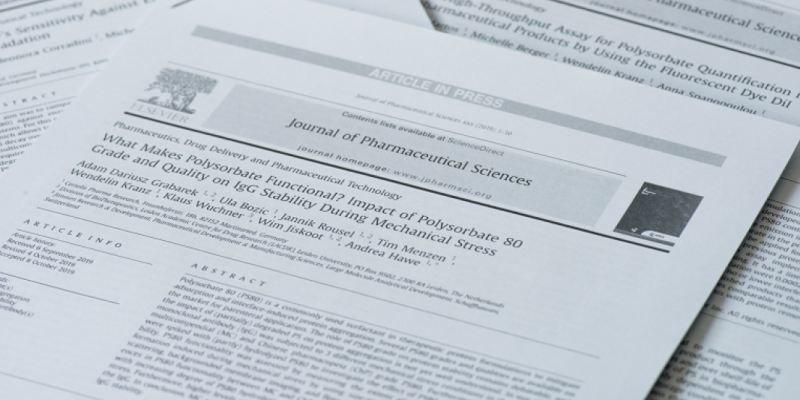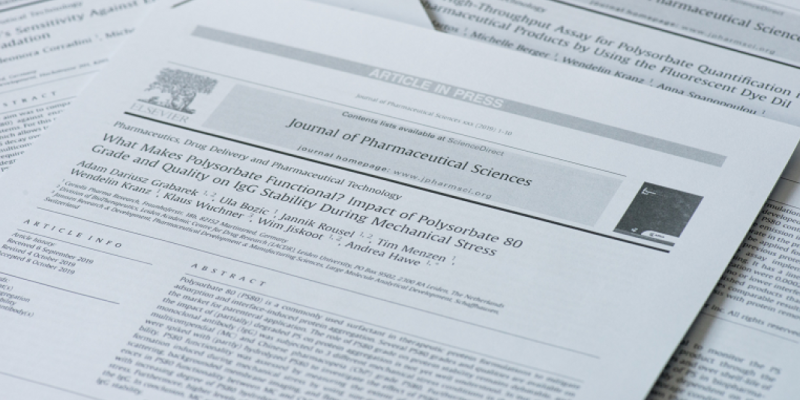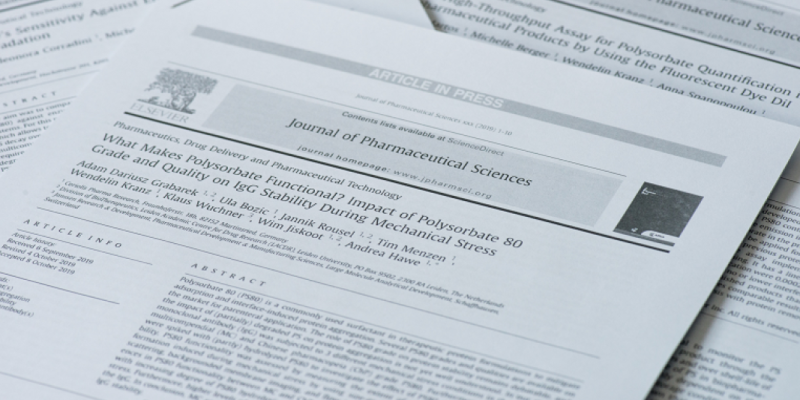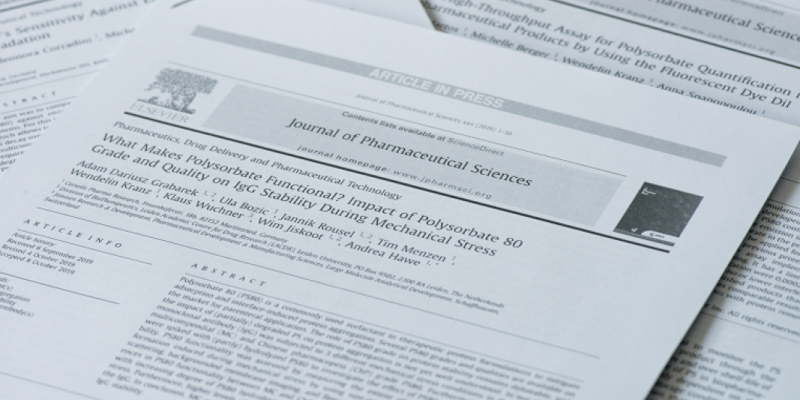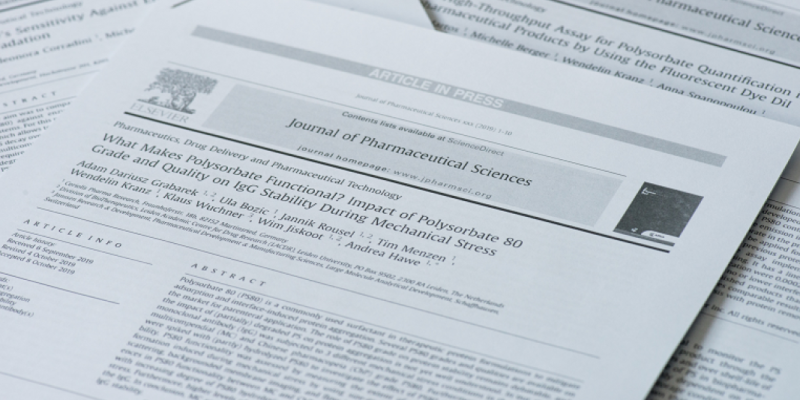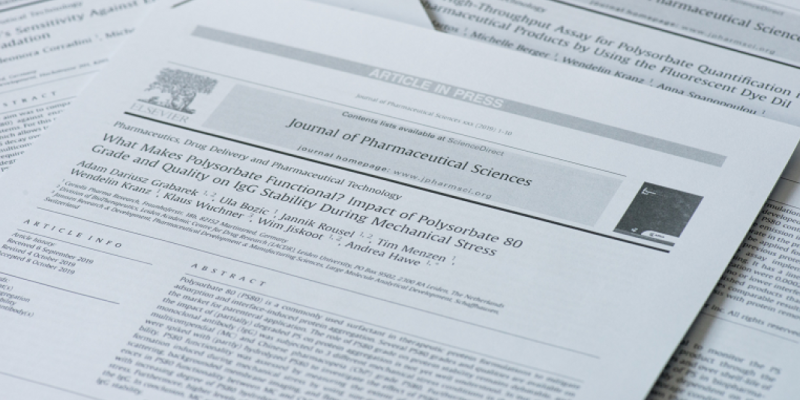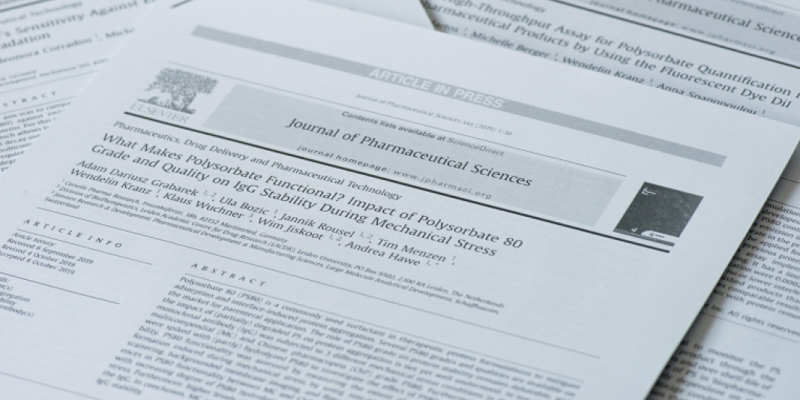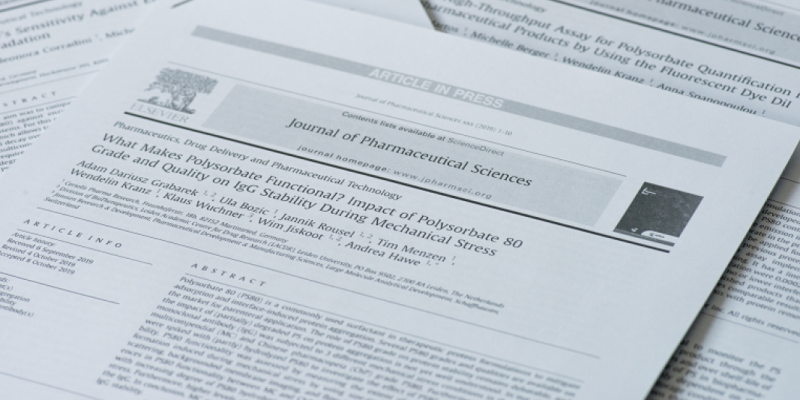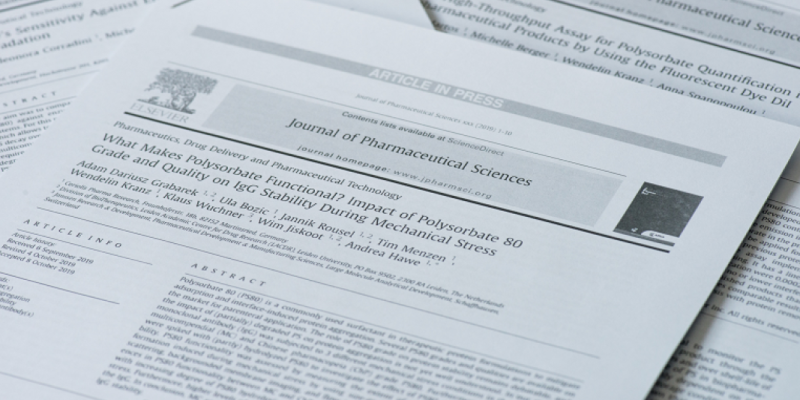Phase-Appropriate Application of Analytical Methods to Monitor Subvisible Particles Across the Biotherapeutic Drug Product Life Cycle.
AAPS J. 2019 Oct
The phase-appropriate application of analytical methods to characterize, monitor, and control particles is an important aspect of the development of safe and efficacious biotherapeutics. The AAPS Product Attribute and Biological Consequences (PABC) focus group (which has since transformed into an AAPS community) conducted a survey where participating labs rated their method of choice to analyze protein aggregation/particle formation during the different stages of the product life cycle. The survey confirmed that pharmacopeial methods and SEC are the primary methods currently applied in earlier phases of the development to ensure that a product entering clinical trials is safe and efficacious. In later phases, additional techniques are added including those for non-GMP extended characterization for product and process characterization. Finally, only robust, globally-accepted, and stability-indicating methods are used for GMP quality control purposes. This was also consistent with the feedback during a webinar hosted by the group to discuss the survey results. In this white paper, the team shares the results of the survey and provides guidance on selecting phase-appropriate analytical methods and developing a robust particle control strategy.
AAPS J. 2019 Oct
https://link.springer.com/article/10.1208%2Fs12248-019-0384-0


